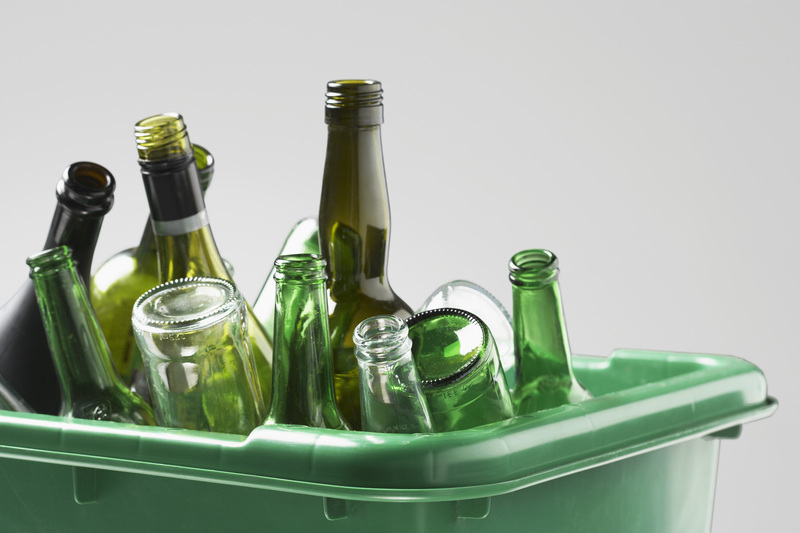How to Keep Your PPE Waste From Polluting Landfills
The surge in the use of Personal Protective Equipment (PPE) such as masks, gloves, gowns, and face shields, especially following the COVID-19 pandemic, has posed a significant environmental issue. The improper disposal of PPE leads to growing concerns about pollution, especially the accumulation of non-biodegradable waste in landfills. If you're wondering how to keep your PPE waste from polluting landfills, this comprehensive guide will explore sustainable solutions for individuals, businesses, and communities.
Understanding PPE Waste and Its Environmental Impact
PPE waste generally consists of single-use items designed to protect individuals from infections and contaminants. However, most PPE--made from plastics like polystyrene, polypropylene, and polyethylene--does not decompose quickly in landfills. The result? Massive amounts of landfill pollution, microplastic contamination, and harm to ecosystems.
- Billions of masks and gloves are disposed of daily worldwide.
- PPE plastics can take up to 450 years to break down in regular landfills.
- Leachates and microplastics enter the environment, harming animals and humans.
Understanding the impact is the first step to keeping your PPE waste out of landfills and protecting the environment.

Why Proper PPE Waste Management Matters
Addressing PPE waste pollution prevention is crucial for several reasons:
- Reduces landfill volume: PPE contributes substantially to landfill growth and space exhaustion.
- Prevents toxins and microplastics: Proper management prevents toxic leachates contaminating water and soil.
- Protects wildlife: Animals often ingest PPE waste or become entangled, leading to injury or death.
- Promotes public health: PPE litter can harbor pathogens, posing health risks to the public.
- Supports circular economy: Recycling and reusing PPE aids in material recovery and sustainability strategies.
Types of PPE Waste and Their Challenges
The term "PPE waste" covers a range of products, each with unique recycling and disposal challenges.
Disposable Masks
- Made mainly of polypropylene (a type of plastic)
- Often contaminated with biological material, complicating recycling
Gloves (Latex, Nitrile, and Vinyl)
- Nitrile and vinyl gloves are plastic-based; latex is natural but often mixed with non-biodegradable additives
- Can carry infectious agents, requiring careful disposal
Gowns, Face Shields, and Other PPE
- Often multi-layered and composed of various plastics
- Difficult to recycle due to composite construction
Best Practices: How to Prevent PPE Waste From Polluting Landfills
To stem the tide of PPE waste in landfills, a combination of reduction, reuse, recycling, and responsible disposal strategies must be employed:
1. Reduce PPE Usage Whenever Possible
- Opt for reusable masks and face shields as opposed to single-use versions.
- Only use PPE when necessary; follow official guidelines to avoid unnecessary consumption.
- Invest in higher-quality reusable PPE that can withstand repeated sanitation.
Reducing PPE waste at the source is the most effective way to keep it out of landfills.
2. Choose Reusable Alternatives to Single-Use PPE
- Reusable cloth masks made from tightly woven cotton or synthetic blends can be washed and reused multiple times.
- Consider rubber or silicone gloves for tasks that aren't medical or biohazard-intensive.
- Reusable gowns and protective gear made of durable fabrics are available in many industries.
Switching to reusables not only reduces landfill waste but also saves money in the long run.
3. Proper Collection and Segregation of Used PPE
- Used PPE should never be disposed of with general waste; use designated PPE disposal bins.
- Segregate contaminated PPE (potentially infectious) from non-contaminated items.
- Businesses and hospitals should provide clearly marked PPE recycling bins and posters explaining disposal procedures.
4. Participate in PPE Recycling Programs
While not all local municipalities accept PPE in curbside recycling, specialty programs now exist to process used PPE materials:
- TerraCycle PPE Recycling: This company offers PPE recycling boxes for households and businesses and ensures safe and responsible recycling.
- Check with your local pharmacy or PPE supplier for take-back or mail-back recycling options.
- Contact local authorities to find recycling drop-off points or hazardous waste collection events that accept PPE.
5. Consider Energy-from-Waste (EfW) Solutions
- In some areas, non-recyclable PPE can be incinerated in controlled facilities to generate energy.
- This method, when done with modern pollution controls, reduces volume and prevents landfill pollution.
- Do NOT burn PPE at home, as this releases toxins and may violate environmental laws.
6. Encourage PPE Take-Back and Producer Responsibility Programs
- Advocate for local regulations that hold PPE manufacturers responsible for end-of-life collection and recycling.
- Support businesses and hospitals that participate in take-back schemes and closed-loop recycling efforts.
- Support innovation--many companies are developing biodegradable PPE and easier-to-recycle materials.
7. Responsible Disposal When No Other Option Exists
- If your area lacks PPE recycling, always double-bag used PPE to protect waste workers and reduce the risk of contamination.
- Never litter: PPE carried by wind or rain easily ends up in waterways and wildlife habitats.
- Seal bags tightly and clearly label if contents are biohazardous.
By following these best practices, individuals and organizations can minimize their contribution to PPE pollution in landfills.
Innovative Solutions for Sustainable PPE Waste Management
Technological advancements and policy changes are driving new ways to keep PPE waste from ending up in landfills:
Biodegradable & Compostable PPE
- Researchers and manufacturers are developing masks and gloves from plant-based polymers and natural fibers.
- Compostable PPE breaks down much faster in composting facilities, leaving minimal residue behind.
- Bio-based PPE must still be disposed of properly: ensure access to commercial composting.
Chemical Recycling and Plastic-to-Fuel Technologies
- Advanced chemical recycling can process contaminated PPE and convert it to fuels or raw materials for new products.
- These technologies are in early stages but show significant promise for addressing the bulk of pandemic PPE waste.
Closed-Loop Systems in Healthcare and Industry
- Some hospitals and laboratories partner with recycling specialists to collect, sanitize, and repurpose PPE within the facility.
- On-site sterilization and recycling can drastically limit waste sent to landfill.
Government Incentives and Extended Producer Responsibility (EPR)
- Governments worldwide are introducing EPR legislations for single-use plastics, including PPE.
- Producers are incentivized to design PPE that's easier to recycle, biodegradable, or reusable.
Community and Corporate Initiatives: Leading by Example
Keeping PPE out of landfills isn't just an individual responsibility--a collective effort multiplies impact. Here are ways communities and businesses are stepping up:
- Hospitals: Partnering with private recycling vendors to repurpose PPE into construction materials and fuel.
- Schools: Educating students about environmental stewardship and providing PPE return bins.
- Offices: Phasing out single-use items and using reusable masks and gloves for non-medical applications.
- Brands: Investing in research and pilot projects for plant-based PPE alternatives.
Community clean-up initiatives target PPE litter hotspots, raising awareness and preventing plastics from reaching landfills--and waterways.

Frequently Asked Questions About PPE Waste and Landfill Pollution
Can disposable PPE be recycled in regular household bins?
No. Most household recycling programs do not accept PPE due to contamination risks and technical limitations. Use specialty PPE recycling options instead.
Are cloth masks better for the environment than surgical masks?
Yes. *Reusable cloth masks* generate significantly less waste and pollution than single-use masks, provided they're washed and cared for properly.
What happens if PPE ends up in landfills?
PPE in landfills can persist for centuries, leaching microplastics and chemicals into the soil and water, endangering local wildlife and human health.
Are biodegradable masks truly compostable at home?
Some are, but most require industrial composting conditions. Always follow manufacturer instructions.
How can workplaces improve their PPE disposal practices?
- Set up PPE-only bins in high-traffic areas.
- Educate staff on responsible PPE use and disposal.
- Partner with certified PPE recyclers and participate in take-back programs.
Conclusion: Your Role in Reducing PPE Landfill Pollution
Preventing PPE waste from polluting landfills is a shared responsibility. By choosing reusable alternatives, supporting recycling initiatives, using PPE responsibly, and spreading the word about these best practices, individuals, businesses, and communities can greatly reduce PPE's environmental footprint.
- Reduce and reuse wherever possible
- Recycle through specialty programs
- Support innovation and policy changes for sustainable PPE
- Dispose of PPE responsibly to protect the environment and future generations
Start today: Share this guide, seek out local solutions, and be part of the movement to keep PPE waste from polluting landfills. Our planet--and our communities--depend on it.
